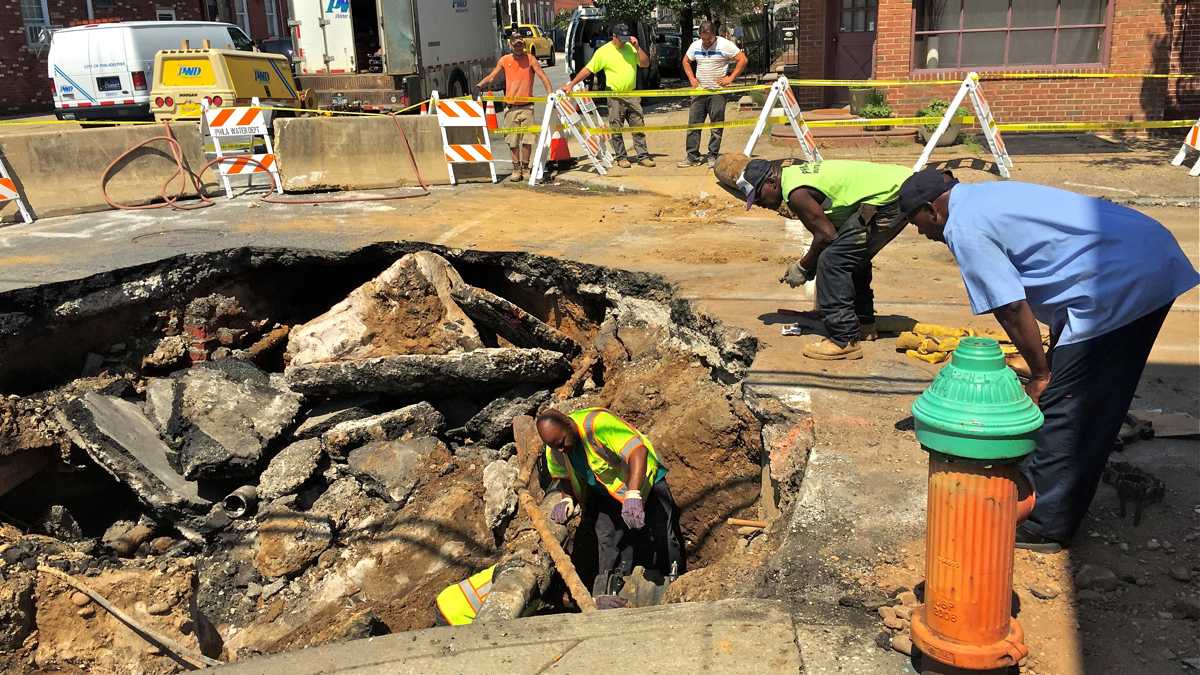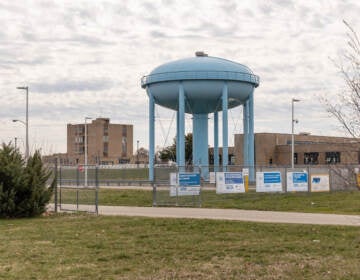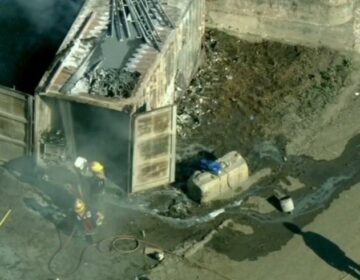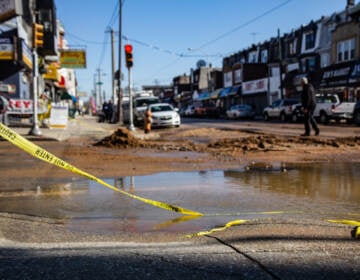Sinkholes, another byproduct of Philly’s aging infrastructure

James Stuckey is a deliveryman at Franco’s Pizza at the corner of Tulip and East Huntingdon Streets in Philadelphia’s Kensington neighborhood.
Here’s how he described the giant fissure that spontaneously spread out in front of the shop earlier this week.
“I would say you can fit a car in there, or a truck,” he said. “It looks like a meteorite hit it.”
As crews continue to plug away at the sinkhole, city officials are describing the phenomenon of chasms opening under city roads as a growing problem with few preventive defenses.
There have been 2,019 reported sinkholes across the city this year, according to the Philadelphia Streets Department. That’s up nearly 20 percent from last year with four months left to go in 2015.
Streets Commissioner David Perri says that means there’s roughly one sinkhole every mile of city road.
“We attributed the large increase we’re having to extreme bouts of cold weather,” he said.
Perri notes that this year has experienced some of the coldest recorded weeks in the city’s history.
Which means water freezes longer deep under the roads, creating ice formations that push away soil. If the ice creates a big enough space, it can trigger an open space. Over time, that can cause a collapse.
“In the springtime, when the ice pockets thaws out, it leaves basically a hole under the street. And that hole can stay as a latent defect for many months, even for several years,” Perri said.
“Eventually a heavy truck will go down the street, it’ll hit that latent defect below the surface, at the right spot, and, all of a sudden, the truck will punch through and you’ll left with a large hole in the street,” he said.
Temple University geologist Laura Toran said besides colder weather sticking around longer, the human-made stuff below ground is partially to blame.
“We developed some of the first sewer systems. We were ahead of our time. And now we’re paying the price for that,” Toran said.
Read full story here
WHYY is your source for fact-based, in-depth journalism and information. As a nonprofit organization, we rely on financial support from readers like you. Please give today.






